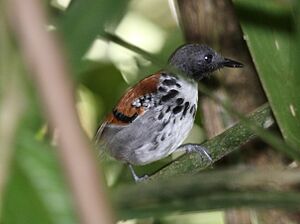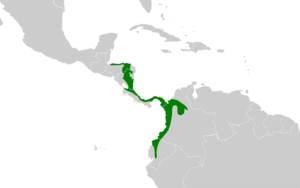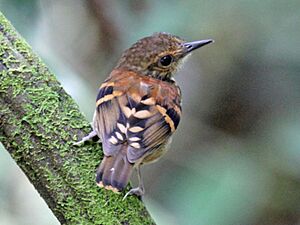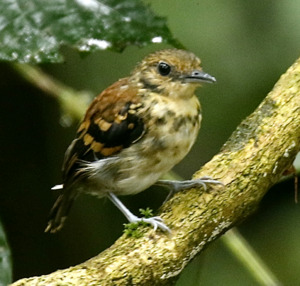Spotted antbird facts for kids
Quick facts for kids Spotted antbird |
|
|---|---|
 |
|
| Conservation status | |
| Scientific classification | |
| Genus: |
Hylophylax
|
| Species: |
naevioides
|
 |
|
The spotted antbird (Hylophylax naevioides) is a species of bird in the family Thamnophilidae. In southern Central America, it is found in Honduras, Nicaragua, Costa Rica and Panama; also Colombia and Ecuador of northwestern South America. Its natural habitat is subtropical or tropical moist lowland forests.
Description
A smallish bird, measuring 11 cm (4.3 in) and weighing 16–19.5 g (0.56–0.69 oz). The male spotted antbird's plumage is a distinctive combination of a necklace of large black spots on a white chest, chestnut back, grey head, and black throat. The female is a duller version of the male, but also distinctive with large chest spots and two wide buffy wing-bars.
Distribution and habitat
Forages as individuals or pairs in lower levels of mature, humid forests. Found in lowlands and foothills up to 1,000 m (3,300 ft).
Behaviour
Spotted antbirds are known to follow army ant swarms to catch insects and other small animals trying to flee. They eat spiders, scorpions, cockroaches, katydids, crickets, centipedes, sowbugs, moths, beetles, caterpillars, ants, bristletails and, on occasion, lizards and frogs.
This bird is an open-cup nesting species that lays an average clutch of 2 maroon-splotched white eggs, which both adults incubate. The nestling period is 11 days.




